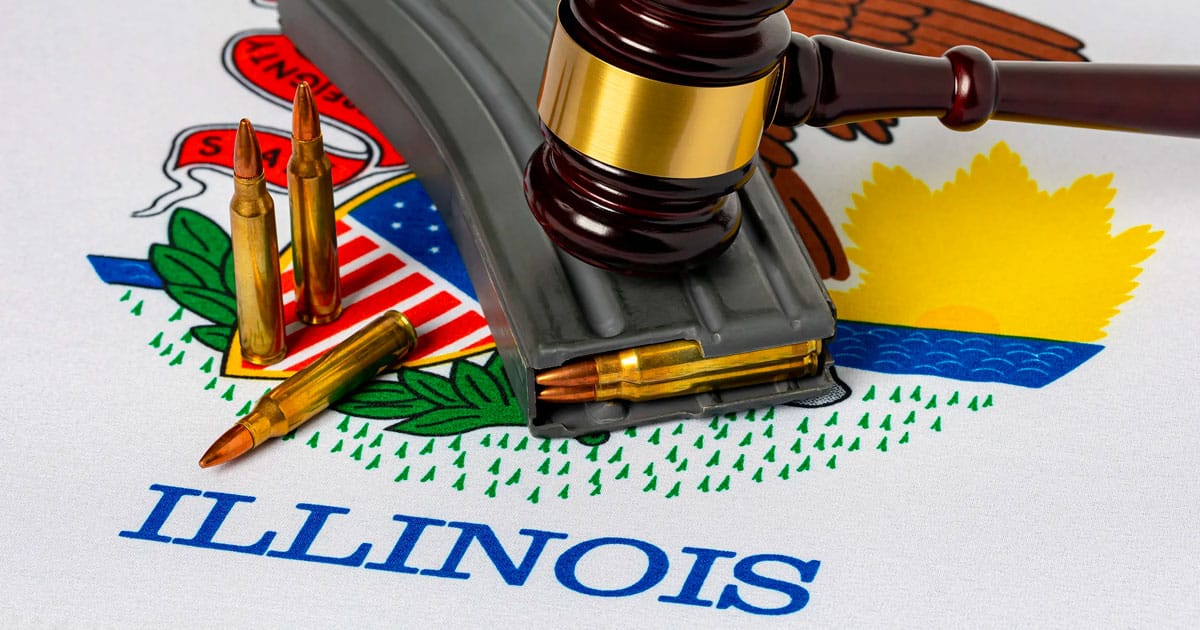
The judge issued a temporary injunction against the statewide ban, ruling that the sweeping legal action not only placed unnecessary obstacles on the right to self-defense, but it also often “completely obliterated that right.”
Now that right is “completely obliterated” once again as the back-and-forth between judges on citizens’ Second Amendment rights continues. Appellate Judge Frank Easterbrook on Thursday agreed to stay the ruling after the appeal was made by the state’s attorneys.
Last week’s decision by McGlynn will now be reviewed by the Seventh U.S. Circuit Court of Appeals.
In the meantime, the Illinois ban on “assault weapons” and high capacity magazines stands. McGlynn’s ruling, which came as quite welcome news to gun rights advocates, was quickly appealed by the state. When McGlynn did not immediately reverse himself, Attorney General Kwame Raoul appealed his ruling to the Seventh Circuit.
Examination of the Thursday decision requires a closer look at Judge Easterbrook. Before serving on the appellate court, Easterbrook was the federal judge who wrote the Friedman v. City of Highland Park decision. This ruling upheld Illinois’ ban covering the AR-15 and multiple other semiautomatic rifles.
Interestingly, Easterbrook’s ruling in Friedman was based on the two-step, interest-balancing method that was previously followed. However, the Supreme Court in last year’s New York State Rifle and Pistol Association v. Bruen swept this protocol away, meaning that the judge should not have implemented it in staying the preliminary injunction.
The high court quite clearly told lower courts that attempting to “balance” an individual’s Second Amendment right to keep and bear arms with the government’s interest in regulating that right is in violation of the Constitution.
That should have settled this practice once and for all. Case closed.
Lower courts previously fell into the practice of using this method to consistently justify upholding gun control ordinances. That route was not even based on a Supreme Court ruling. Rather, it was part of the dissent in the District of Columbia v. Heller case. Justice Stephen Breyer laid out that legal theory, and it was hardly binding.
Still, many courts based their shaky reasoning on this theory and ruled against gun rights.
Bruen should have swept this flawed logic away, but apparently it didn’t.
Instead, Easterbrook directed the plaintiffs, who were given until May 9 to file a response, to consider two previous decisions from the Seventh Circuit. One was his own in the Friedman case, and the other was Wilson v. Cook County. In both rulings, the Seventh Circuit court upheld sweeping “assault weapons” bans in Highland Park and Cook County.
Both considered and ultimately decided that the freedoms afforded by the Second Amendment do not prevent local governments from categorically banning entire classes of weapons. This, the rulings in the cases concluded, could be done for public safety’s sake.
In other words, balancing the interest of governments with the Second Amendment. The exact framework that was explicitly struck down by 2022’s Bruen decision.
No matter, as Easterbrook turned his back on the high court’s new guidance and instead applied his own outdated reasoning.
It will be noteworthy to see how his ruling affects Justice Amy Coney Barrett’s findings on the Naperville “assault weapons” ban. She is set in coming days to receive a brief from the city on its law that mirrored the statewide prohibition of semiautomatic rifles and high-capacity magazines.
The possibility remains, and gun rights advocates should keep their fingers crossed, that this will lead to the high court weighing in on “assault weapons” bans in general.
